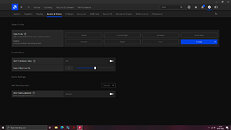
NimeZ Unofficial Radeon Drivers 22.7.1 Bring Noise Suppression Tech to Pre-RDNA GPUs
Unofficial driver packs tend to unlock features outside of a product's feature-set, and the most prominent of these for AMD Radeon GPUs is the NimeZ series. Their latest 22.7.1-based driver pack extends Radeon Noise Suppression technology support to older generation GPUs (which predate the RX 5000 series). This would cover the RX 500/400 series "Polaris," the RX Vega series, and even the much older Graphics CoreNext architecture (R# 300-series and 200-series from a decade ago). Most importantly, this brings the technology to the various generations of AMD Ryzen and A-series APUs. Use of unofficial drivers isn't covered under product warranties, but then your pre-RDNA graphics card is probably outside its coverage anyway.



















































